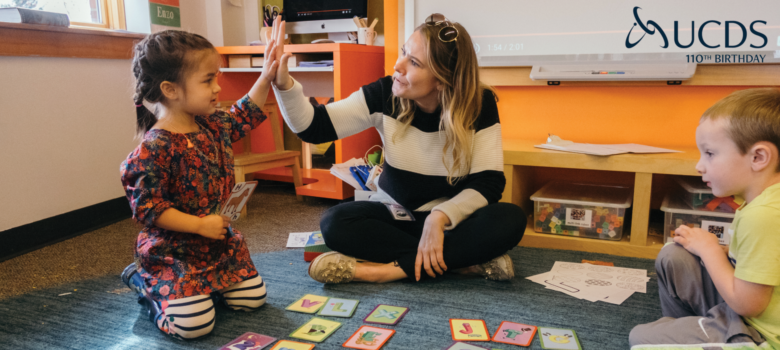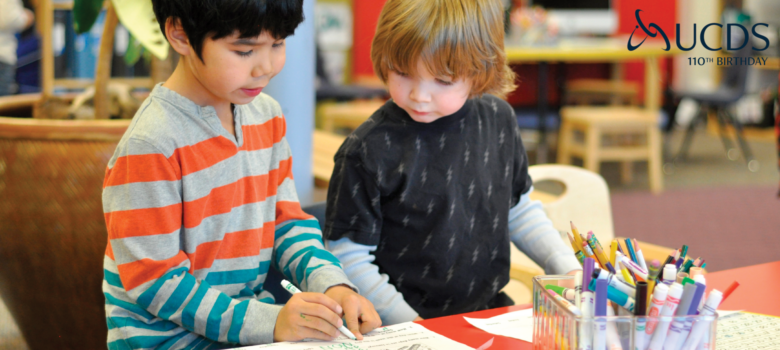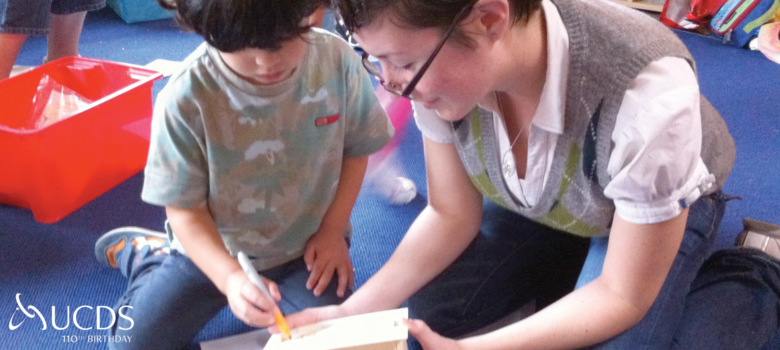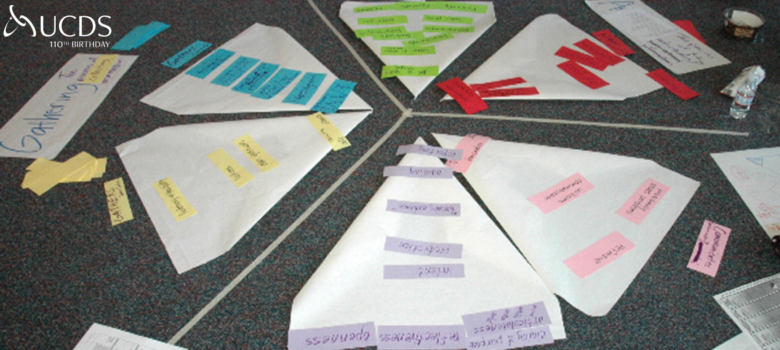Returning for another end-of-year blog is the Curriculum Coordinator of our Infant and Toddler Studio Program, Marianne Sardelich. -Ed.
__________
I was recently chatting with a parent of a child in our Toddler/ Preschool classroom about their child’s favorite doll. The doll had been a topic of conversation after it was left in the car and the child worried that the doll would miss her while she was at school. As the mother and I talked, I kept referring to the doll as a “she”. Finally, I stopped myself and asked if the doll was a boy or a girl. The mother responded saying that sometimes the doll had a girl’s name and sometimes the doll had a boy’s name, but sometimes when the doll had a boy’s name her daughter would still refer to it as a “she.” Then she said, “I guess she isn’t at the age where you can distinguish a boy’s name from a girl’s name.”
When I thought about this conversation on my way home from school, I realized that last year our upstairs classroom would have had no problem telling a boy’s name from a girl’s name. If there had been any question about the gender of a particular name, they probably would have asked for clarification. We had many discussions with the children about boys and girls. We spent mornings navigating the tricky social problems that occur when one child tells another that they have to be a boy or a girl to play their game. For some of the children, the gender roles of boys and girls were already well defined and we worked to help them think more flexibly.
For the first time I realized that we haven’t had those discussions this year. We navigate plenty of social problem-solving but none of it has revolved around boys vs. girls. It made me wonder, what was different this year? There have been just as many games that are influenced by television and movies but for some reason, this year, everyone has a role to play. The children aren’t talking about the differences between boys and girls like we have seen in past years; instead there is a feeling of inclusivity.
In the article “When do children develop their gender identity?” by Vanessa LoBue, she writes that children begin to identify as a particular gender at around two or three years of age. Their concepts of gender roles become more rigid as they get older and are exposed to societal and environmental influences (LoBue). Our world, though, is becoming a place where there is no standard image for a woman or for a man. “And of late, the lines between sex and gender are becoming more blurred as people are becoming more comfortable identifying as transgender – or with a gender that is not consistent with their sex. “In fact, for some people, gender is nonbinary, and exists on a spectrum of masculinity and femininity.”(LoBue) In Sweden, the Nicolaigarden school decided to stop using masculine and feminine pronouns and call all of the children “friends” in order to create more gender equality in their classrooms (Tagliabue). In America, there are more and more stories in the news of children identifying as a different gender than the one they are born with and schools struggling to accommodate them or choosing not to.
It feels like an excellent time to talk as a school about the role that gender plays in our classrooms, and to consider what might be the difference between last year and this year that made the classroom feel more inclusive. We might also want to consider the way that we approach children’s questions and understanding of gender and whether or not there is more that we can do to promote gender equality. I think the changes that are happening in America and abroad regarding the ways that we define and address gender will have a positive impact on our teaching and our classrooms.
“When do children develop their gender identity?” by Vanessa LoBue http://theconversation.com/when-do-children-develop-their-gender-identity-56480
Swedish School’s Big Lesson Begins With Dropping Personal Pronouns
http://www.nytimes.com/2012/11/14/world/europe/swedish-school-de-emphasizes-gender-lines.html




